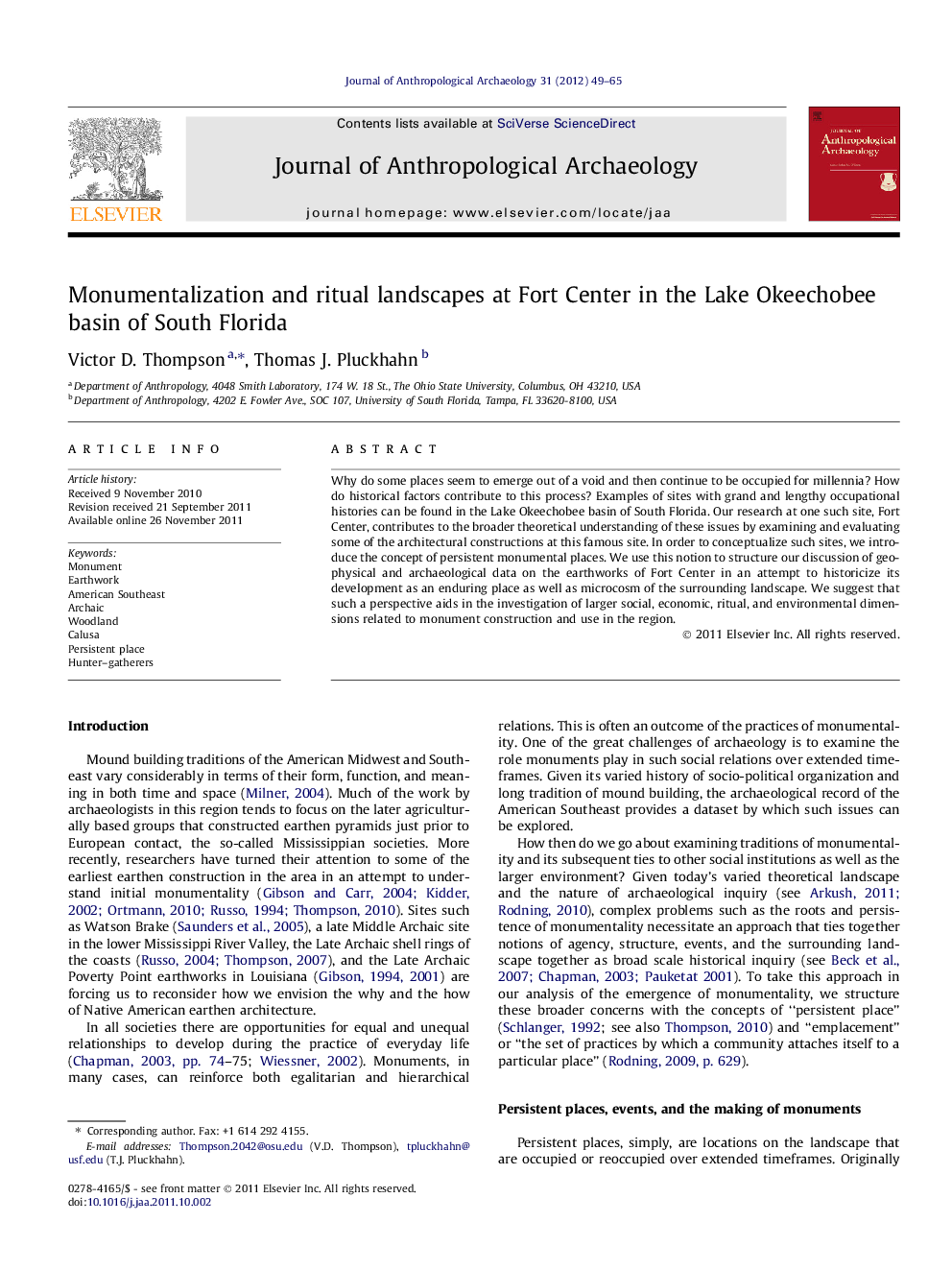| Article ID | Journal | Published Year | Pages | File Type |
|---|---|---|---|---|
| 1035010 | Journal of Anthropological Archaeology | 2012 | 17 Pages |
Why do some places seem to emerge out of a void and then continue to be occupied for millennia? How do historical factors contribute to this process? Examples of sites with grand and lengthy occupational histories can be found in the Lake Okeechobee basin of South Florida. Our research at one such site, Fort Center, contributes to the broader theoretical understanding of these issues by examining and evaluating some of the architectural constructions at this famous site. In order to conceptualize such sites, we introduce the concept of persistent monumental places. We use this notion to structure our discussion of geophysical and archaeological data on the earthworks of Fort Center in an attempt to historicize its development as an enduring place as well as microcosm of the surrounding landscape. We suggest that such a perspective aids in the investigation of larger social, economic, ritual, and environmental dimensions related to monument construction and use in the region.
► Remote sensing illustrates variation in monument constructions by hunter–gatherers. ► Radiocarbon dates and artifacts indicate over 2000 years of occupation at the site. ► Ritual appears to have been one of the primary drivers for landscape modification.
